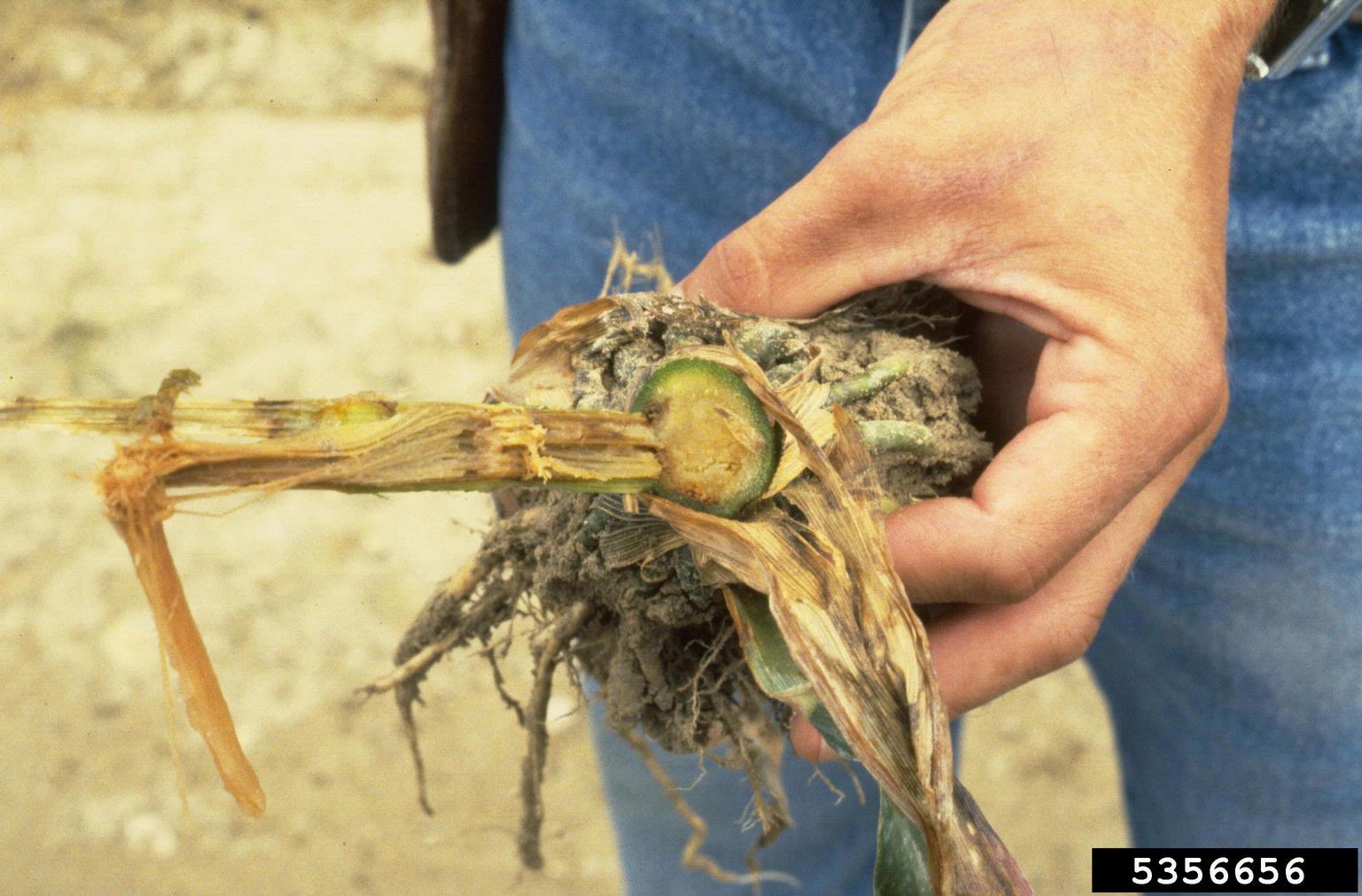Rotting Corn Stalks: What Causes Sweet Corn Stalks To Rot


There is nothing quite as disappointing as adding a new plant to the garden only to have it fail due to pests or disease. Common diseases such as tomato blight or sweet corn stalk rot may often discourage gardeners from trying to grow these plants again. We take these diseases as personal failures but, in truth, even experienced commercial farmers experience these problems. Stalk rot in sweet corn is so common that it causes about a 5 to 20% commercial yield loss every year. What causes sweet corn stalks to rot? Continue reading for the answer.
About Stalk Rot in Sweet Corn
Rotting corn stalks can be caused by fungal or bacterial pathogens. The most common cause of sweet corn with rotting stalks is a fungal disease known as anthracnose stalk rot. This fungal disease is caused by the fungus Colletotrichum graminicola. Its most common symptom is shiny black lesions on the stalk. Spores of anthracnose stalk rot and other fungal rots rapidly grow in hot, humid conditions. They can spread by contact, insect vectors, wind, and splash back from infected soils. Another common fungal sweet corn stalk rot is fusarium stalk rot. A common symptom of fusarium stalk rot is pink lesions on the infected corn stalks. This disease can affect the whole plant and may lie dormant in corn kernels. When these kernels are planted, the disease continues to spread. A common bacterial sweet corn stalk rot disease is caused by the bacteria Erwinia chrysanthemi pv. Zeae. Bacterial pathogens enter corn plants through natural openings or wounds. They can be spread from plant to plant by insects. While these are just a few of the fungal and bacterial diseases that cause stalk rot in sweet corn, most have similar symptoms, grow in the same hot, humid conditions, and are commonly spread from plant to plant. Common symptoms of sweet corn stalk rot are discoloration of the stalk; gray, brown, black, or pink lesions on the stalk; white fungal growth on stalks; wilting or distorted corn plants; and hollow stalks that bend, break, and topple over.
Treatment for Sweet Corn with Rotting Stalks
Corn plants that are injured or stressed are more susceptible to rot diseases. Plants with too little nitrogen and/or potassium are susceptible to stalk rots, so proper fertilization can help keep plants disease free. Crop rotation can also add needed nutrients to the soil and stop the spread of diseases. Many pathogens that cause rotting corn stalks may lie dormant in the soil. Deeply tilling fields between crops can prevent the spread of disease from splash back. Since insects often play a role in spreading these diseases, pest management is an important part of controlling sweet corn stalk rot. Plant breeders have also created many new disease-resistant varieties of sweet corn.
Gardening tips, videos, info and more delivered right to your inbox!
Sign up for the Gardening Know How newsletter today and receive a free copy of our e-book "How to Grow Delicious Tomatoes".
-
 Get Ready For A Summer Of Hummers! Grow These Full Sun Hummingbird Plants and Flowers
Get Ready For A Summer Of Hummers! Grow These Full Sun Hummingbird Plants and FlowersIf you’re lucky enough to enjoy a sunny backyard, make sure you are maxing out on your pollinator opportunities and grow these full sun hummingbird plants and flowers
By Tonya Barnett
-
 12 Lush Alternatives To A Lawn For Sustainable Spaces
12 Lush Alternatives To A Lawn For Sustainable SpacesAlternatives to a lawn are beautiful and also beneficial to your local ecosystem and its pollinators. Explore our top picks for plants to replace grass.
By Tonya Barnett